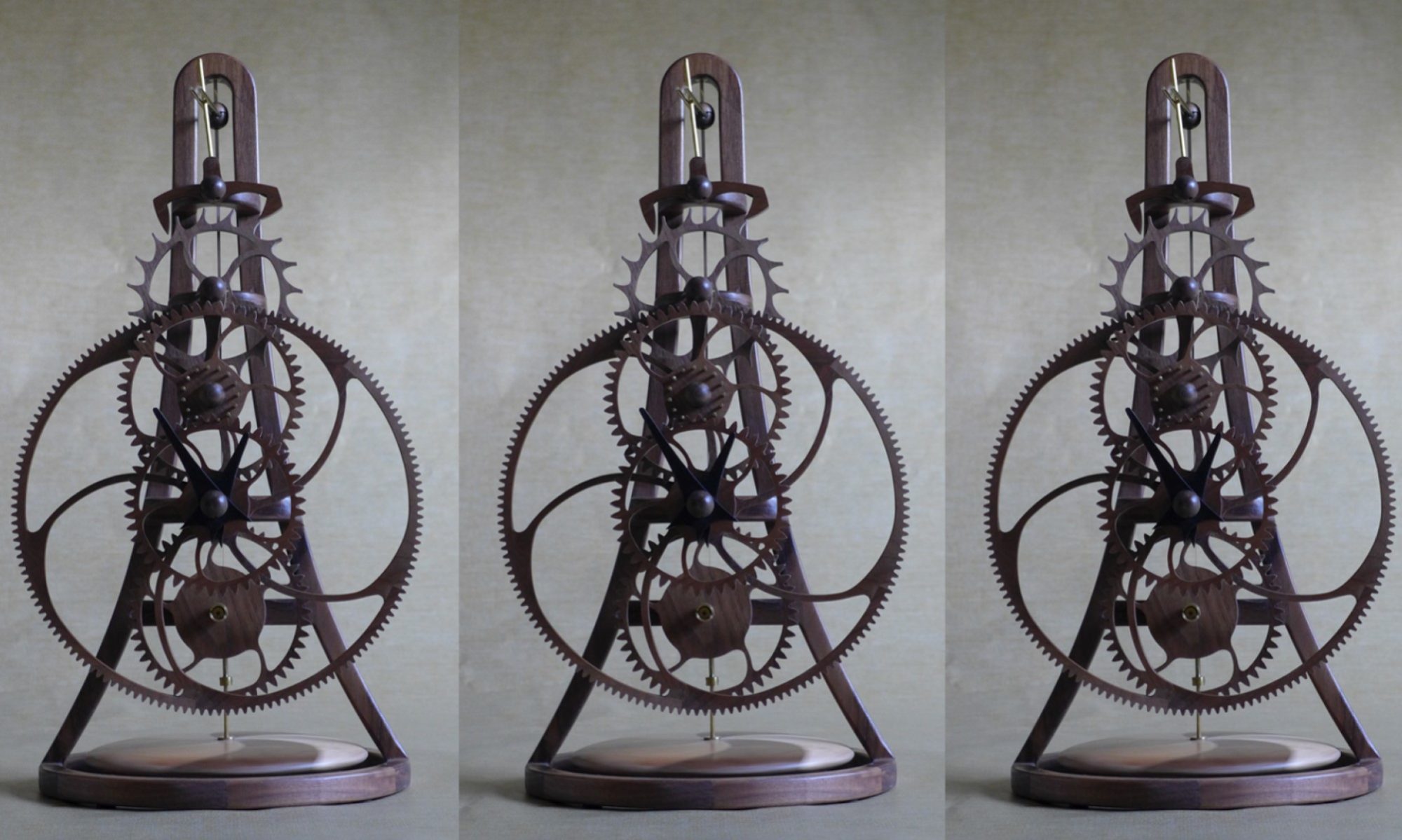I construct all the wheels, other than the escape wheel and pallet, from a single layer of wood and have not had any issues of the wheels distorting over time, or teeth breaking. Because maintaining very tight tolerances on the escape wheel and pallet is critical for the smooth running of the clock, and the escape wheel teeth are thin and are potentially prone to breaking, I take the extra time and effort to make my own plywood for these parts.
The escape wheel and pallet are 1/4” thick and I construct them from 3-layer plywood using a 1/8” core with 1/16” sheets on either side with their grain running perpendicular. On my early clocks I used standard white woodworking glue for all joints, but found that any trace of the glue on the wood surface resulted in an ugly whitish / yellow stain when the finishing lacquer was applied. On recent clocks I have been using Weldwood Plastic Resin Glue, a powder that you need to mix with water each time you want to use it and has a long drying time, but any excess can be removed with a damp cloth and remaining traces are not visible when the clock is finished.

After gluing, I clamp the here layers of ply together and leave to dry for a day. The result is a very rigid sheet of wood.


